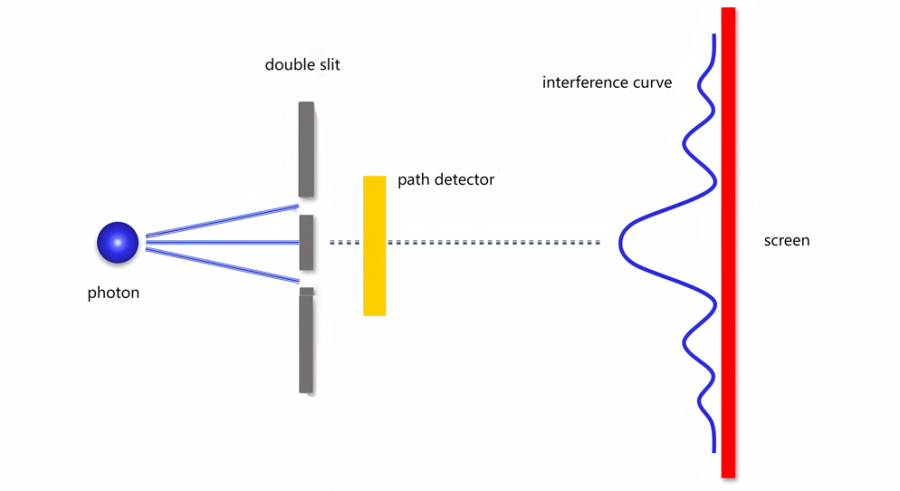
Universal Conservation Laws of the Wave–Particle–Entanglement Triad
FAYETTEVILLE, GA, UNITED STATES, March 27, 2025 /EINPresswire.com/ -- Light’s dual nature, manifesting as both wave-like and particle-like behaviour, is a phenomenon known as wave-particle duality and remains one of the most perplexing mysteries in quantum mechanics. This concept lies at the heart of quantum theory, with Nobel laureate Richard Feynman famously calling it "a real mystery in quantum mechanics" and asserting that understanding it is key to grasping the essence of quantum mechanics. Equally profound is quantum entanglement, a hallmark of quantum physics, experimentally proven to be a fundamentally non-classical correlation between particles, further revealing the deeply counterintuitive nature of the quantum world.
Despite the fundamental significance of wave-particle duality, quantifying the wave and particle behaviours of particles has remained a challenging task. It was not until 1979 that Wootters et al. developed a method to quantify wave-particle duality. Later, Englert further refined this approach, formulating an inequality known as the famous wave-particle duality relations.
In Englert’s double-slit experiment, photons can traverse either the upper or lower path, with detectors positioned behind each to reveal which path the photons actually took. Simultaneously, an interference pattern of alternating bright and dark fringes forms on the screen, indicative of wave behaviour associated with the brightest and darkest fringes. In contrast, particle behaviour is determined by the ability to ascertain the photon's path. For example, a particle behaviour value of 1 signifies the exact determination of the photon’s path without ambiguity. Over time, researchers have formulated axioms for wave and particle behaviours, with substantial efforts directed toward identifying measures that conform to these axioms.
Although a method for quantifying wave-particle duality has been established, another challenge has emerged: the complementary nature of wave-particle duality is expressed through an inequality. Is it possible to identify the missing components within the wave-particle duality relations and thereby transform the inequality into a precise equation?
In a recent paper published in Light Science & Applications, a team of researchers led by Professor Zhihao Ma from Shanghai Jiao Tong University, Professor Shao-Ming Fei from Capital Normal University and the Max Planck Institute for Mathematics in the Sciences, and senior scientist Yunlong Xiao from A*STAR's Quantum Innovation Centre (Q.InC), Singapore, introduced a theoretical framework that unifies key measures of wave behaviour, particle behaviour, and entanglement. They revealed a conservation relationship among these three elements. Specifically, for a closed system of two photons (a bipartite pure state of arbitrary dimension), a complementary relationship exists between wave-particle behaviours and the entanglement of the bipartite pure states. This implies that the sum of wave behaviour, particle behaviour, and entanglement remains constant, regardless of the choice of the bipartite pure state. The research team of Professor Jianwei Wang from Peking University, experimentally validated this relationship using a silicon-integrated nanophotonic quantum chip. The researchers summarize their findings:
“We discover that measures of wave behaviour, particle behaviour, and entanglement can all be derived from a differentiable, strictly convex function. By selecting different functions, a vast number of possible measures for these quantities can be generated. Moreover, the three measures derived from this convex function are all appropriate, as they satisfy the corresponding axiomatic assumptions. For each selected function, the sum of the three quantities-wave behaviour, particle behaviour, and entanglement-is shown to be constant, depending only on the dimension and the chosen function. This is not merely a mathematical coincidence, but rather a demonstration of the profound intrinsic connections among these three crucial physical quantities. Hence, it becomes feasible to formulate comprehensive conservation laws that integrates all three quantities.” Professor Ma said.
“We experimentally validate these findings for two, three, and four dimensions using a silicon nanophotonic integrated quantum chip. The experimental results are in close agreement with the theoretical predictions, further confirming that the conservation relationship between wave-particle duality and entanglement is universally valid. For bipartite mixed states, the conservation law transitions from a strict equality to an inequality. Our experimental results confirm this finding in the context of bipartite mixed states. From an information-theoretic perspective, this suggests that in open systems, some information dissipates into the environment, reducing the total amount of information, and thus the conservation relationship is violated.”
“This work introduces a theoretical framework that encompasses a broad class of common measures of wave behaviour, particle behaviour, and entanglement, showing that the conservation relationship between these three quantities is universally applicable. Moreover, the relationship is experimentally confirmed using a silicon-integrated nanophotonic quantum chip. This research has led to a more profound understanding of the relationship between wave-particle duality and entanglement. On one hand, it provides new insights into the fundamental questions of quantum mechanics. On the other hand, it contributes to the discovery of novel technical applications in areas such as quantum precision measurement. The implications of this study are far-reaching, offering both theoretical advancements and practical possibilities in the field of quantum physics. ” the researchers added.
References
DOI
10.1038/s41377-025-01759-4
Original Source URL
https://doi.org/10.1038/s41377-025-01759-4
Funding Information
This work is supported by the Fundamental Research Funds for the Central Universities, the National Natural Science Foundation of China (nos. 12371132, 12325410, 61975001, 12075159, and 12171044), the Innovation Program for Quantum Science and Technology (2021ZD0301500), the National Key R&D Pro-gram of China(2019YFA0308702), and the specific research fund of the Innovation Platform for Academicians of Hainan Province under Grant No. YSPTZX202215. Y. X. acknowledges support from the National Research Foundation of Singapore and A*STAR under its Quantum Engineering Programme (NRF2021-QEP2-02-P03),and from A*STAR under its Central Research Funds and grant C230917003.
Lucy Wang
BioDesign Research
email us here
Distribution channels: Science, Technology
Legal Disclaimer:
EIN Presswire provides this news content "as is" without warranty of any kind. We do not accept any responsibility or liability for the accuracy, content, images, videos, licenses, completeness, legality, or reliability of the information contained in this article. If you have any complaints or copyright issues related to this article, kindly contact the author above.
Submit your press release

